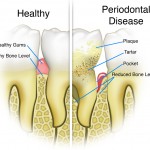
Worldwide periodontal disease is very common, and reviews have shown that periodontal disease has a negative impact on quality of life. Studies have also suggested that periodontal treatment has a positive impact on quality of life.
The aim of this review was to evaluate if there is an impact of non-surgical periodontal treatment on oral health- related quality of life.
Methods
Searches were conducted in the PubMed/Medline, CENTRAL, CINHAL, Embase, and LILACS databases supplemented by searches of the journals; Journal of Clinical Periodontology, Journal of Periodontology, Journal of Periodontal Research, Clinical Implant Dentistry and Related Research, Clinical Oral Implants Research, International Journal of Oral & Maxillofacial Implants and Journal of Oral and Maxillofacial Surgery, Randomised clinical trials (RCT) and observational studies (case-control and cohort studies) measuring oral health related quality of life (OHRQoL) before and after NSPT were considered.
Two reviewers independently selected studies and abstracted data. Risk of bias was assessed using the Cochrane domains-based tool for RCTs and the Newcastle-Ottawa Scale (NOS) for case-control and cohort studies. Primary outcomes were oral health-related quality of life measures, secondary outcomes were plaque index (PI), percentage of bleeding on probing (BoP), probing depth (PD), clinical attachment level (CAL), number of teeth and percentage of sites with PD equal or higher than 4 mm (PD ≥ 4). Meta-analyses were conducted where possible.
Results
- 12 studies (10 observational, 2 RCTS) were included.
- The 2 RCTs were considered to be at low risk of bias and all 10 observational studies were considered to be of high quality.
- 7 Cohort studies (519 patients) using Oral Health Impact Profile-14 (OHIP-14) contributed to a meta-analysis
- Non-surgical periodontal treatment improved OHRQoL levels on average
- 2.49 (95%CI; 0.95-4.02) at 1-2 weeks
- 8.94 (95%CI; 6.89-10.99) at 3-4 weeks and
- 6.49 (95%CI; 5.11-7.88) at 6-12 weeks.
Conclusions
The authors concluded: –
the use of non-surgical periodontal treatment procedures improves the oral health-related quality of life in a short timeframe, remaining stable after 3 months of treatment.
Comments
A good range of databases and journal have been searched for this review although only 12 studies met the inclusion criteria. The studies used a range of questionnaire to gather the OHRQoL data so meta-analysis was only conducted with 7 cohort studies. While the reviewers considered all the included cohort studies to be of high quality, they are relatively small and of short duration which has been taken into consideration by the authors in their conclusions.
We first looked at this question in 2012 in a review by Shanbhag et al (Dental Elf – 16th May 2012) which included 11 studies involving a wider range of study designs. While this new review includes 7 studies published since 2012 with the overall findings remaining similar to those of the earlier review.
Links
Primary Paper
Botelho J, Machado V, Proença L, Bellini DH, Chambrone L, Alcoforado G, Mendes JJ. The impact of nonsurgical periodontal treatment on oral health-related quality of life: a systematic review and meta-analysis. Clin Oral Investig. 2020 Feb;24(2):585-596. doi: 10.1007/s00784-019-03188-1. Epub 2020 Jan 4. PubMed PMID:31901977.
Other References
Dental Elf – 25th Apr 2016
Dental Elf – 16th May 2012
Periodontal treatment can moderately improve quality of life

On behalf of all authors, we thank you for sharing. We believe these results will motivate people to seek proper care when apparently everything seems not ok. The ultimate message is: treating periodontitis is possible and will improve your quality of life! Best, João